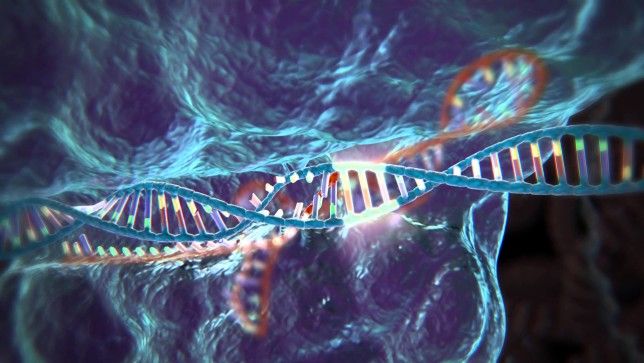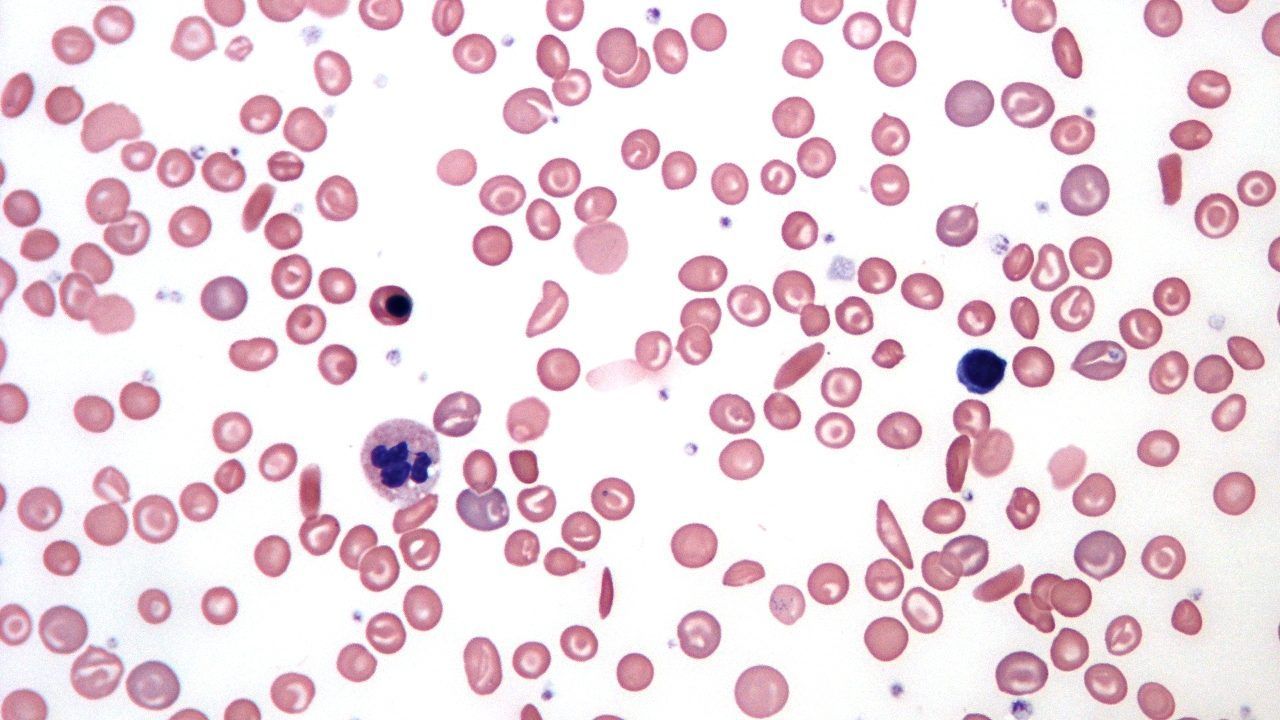Archive for the ‘genetics’ category: Page 463
Oct 19, 2016
CRISPR-based startups rush to IPO and don’t seem to care that we don’t know who officially owns CRISPR
Posted by Shane Hinshaw in categories: biotech/medical, genetics
CRISPR Therapeutics—a Swiss startup hoping to harness the gene-editing technology it’s named after to develop treatments for genetic illnesses like sickle-cell anemia and cystic fibrosis— went public today (Oct. 19), raising $56 million in its initial public offering. It’s the third CRISPR-related biotech to IPO this year despite a pitched battle over who owns the patent to the breakthrough technique.
The market for CRISPR (short for “clustered regularly interspaced short palindromic sequences”) is projected to be worth more than $5.5 billion by 2021, nearly double its current value, according to research firm MarketsandMarkets. The potential of the cheap, easy-to-use technology—which could do everything from creating a mushroom that doesn’t brown to curing cancer by cutting and pasting snippets of DNA—has companies rushing to develop new applications even though no one knows who will ultimately control it.
“It’s a race,” says Fabien Palazzoli, head of biotech intellectual property (IP) analytics for the consulting firm IPStudies. “It’s a race for the IPO, for the scientific results, for the FDA recommendation, for the IP.”
Oct 19, 2016
Humanized organs in gene-edited animals
Posted by Steve Hill in categories: 3D printing, bioprinting, biotech/medical, genetics, life extension
Humanized organs in gene-edited animals is one potential way medicine can deal with the demand for transplant organs.
One potential avenue for research and to help solve the organ shortage is to modify animals to be closer matched to humans in order to have organs capable of being used for transplant. This short paper is an interesting primer into the subject and touches upon the technical and ethical concerns involved here.
It is one possible solution to the problem, however, 3D bioprinting increases in sophistication and other methods are also being developed that would render this approach needless. Still this is an interesting insight into regenerative medicine and one possible path research might take.
#LifespanIO #aging #crowdfundthecure
Continue reading “Humanized organs in gene-edited animals” »
Oct 17, 2016
Engineers reveal fabrication process for revolutionary transparent graphene neural sensors
Posted by Roman Mednitzer in categories: bioengineering, biotech/medical, genetics, neuroscience

In an open-access paper published Thursday (Oct. 13, 2016) in the journal Nature Protocols, University of Wisconsin–Madison engineers have published details of how to fabricate and use neural microelectrocorticography (μECoG) arrays made with transparent graphene in applications in electrophysiology, fluorescent microscopy, optical coherence tomography, and optogenetics.
Graphene is one of the most promising candidates for transparent neural electrodes, because the material has a UV to IR transparency of more than 90%, in addition to its high electrical and thermal conductivity, flexibility, and biocompatibility, the researchers note in the paper. That allows for simultaneous high-resolution imaging and optogenetic control.
Oct 17, 2016
The 4 big ethical questions of the Fourth Industrial Revolution
Posted by Shane Hinshaw in categories: bioengineering, biological, genetics, robotics/AI

https://youtube.com/watch?v=khjY5LWF3tg
We live in an age of transformative scientific powers, capable of changing the very nature of the human species and radically remaking the planet itself.
Advances in information technologies and artificial intelligence are combining with advances in the biological sciences; including genetics, reproductive technologies, neuroscience, synthetic biology; as well as advances in the physical sciences to create breathtaking synergies — now recognized as the Fourth Industrial Revolution.
Continue reading “The 4 big ethical questions of the Fourth Industrial Revolution” »
Oct 15, 2016
Researchers improve accuracy of synthetic clock
Posted by Karen Hurst in categories: bioengineering, biotech/medical, genetics
Nice.
(Phys.org)—A team of researchers with Harvard University and the University of Cambridge has successfully improved the accuracy of a synthetic clock known as a repressilator. In their paper published in the journal Nature, the team describes the steps they took to reduce the amount of noise in the biological system and how well it worked. Xiaojing Gao and Michael Elowitz with the California Institute of Technology offer a News & Views piece on the work done by the team and explain how their results could improve understanding of natural gene circuits.
Scientists have noted the high precision that some living cells demonstrate in keeping track of time, such as those that are part of the circadian clock, and have tried to duplicate the process. Sixteen years ago, Michael Elowitz and Stanislas Leibler developed what is now known as the repressilator—a synthetic oscillating genetic circuit. Their results demonstrated that it was possible for genetic circuits to be designed and built in the lab. The resulting circuit functioned, but was noisy, and therefore much less accurate than natural cell clocks. In this new effort, the researchers improved several of the design steps of the repressilator, each greatly reducing the amount of noise, and in so doing, increased the precision.
Continue reading “Researchers improve accuracy of synthetic clock” »
Oct 10, 2016
Star Trek-inspired device to detect rogue genetically modified organisms in the wild
Posted by Shane Hinshaw in category: genetics
GMOs can have a positive impact, but those that “escape” their intended environment may end up wreaking havoc on the natural ecosystem. To combat this, a team is developing a device that scans water samples to detect GMO-associated proteins in the wild, and help authorities respond to them.
Oct 8, 2016
“Genetically Edited Organisms”(GME): Monsanto and the CRISPR Genome Editing Technology. Who Would you Trust to “Play God”?
Posted by Aleksandar Vukovic in categories: biotech/medical, food, genetics
Last week the U.S. corporation Monsanto, which holds a leading position in the global market of genetically modified organisms (GMOs), reached a licensing agreement with the Broad Institute, Cambridge, USA, on the commercial use of the innovative genome-editing technology CRISPR/Cas9 for agriculture applications. This news has led some experts to believe that Monsanto will now completely switch from producing ‘traditional’ GMOs to ‘genetically edited’ organisms, which are supposedly ‘safer and practically identical’ to their natural alternatives.
Let’s have a closer look at this technology which makes GMO supporters feel so enthusiastic and has been positioned by them as the universal panacea solving all of mankind’s problems. We will also delve deeper into some of the darker aspects of CRISPR/Cas9; the points that biotechnology lobbyists prefer not to discuss.

Oct 8, 2016
Boys conceived through IVF technique have lower than average fertility
Posted by Steve Hill in category: genetics
IVF male children inherit their father’s fertility problems. Hopefully, preimplantation genetic diagnostics (PGD) can help solve this problem for the next generation born via IVF, and it can start solving it TODAY.
Tests on young men conceived via intra-cytoplasmic sperm injection show that they have lower sperm quantity and quality that those conceived naturally.
Oct 5, 2016
With New Program, DARPA To Encourage Safety “Brakes” For Gene Editing
Posted by Karen Hurst in categories: bioengineering, biotech/medical, finance, genetics, health, military
Xconomy National —
Drugs that use molecular scissors to snip out or replace defective genes. Altered mosquitoes meant to sabotage entire disease-carrying populations. Both are potential uses of genome editing, which thanks to the CRISPR-Cas9 system has spread throughout the world’s biology labs and is now on the doorstep of the outside world. But with its first applications could also come unintended consequences for human health and the environment. The U.S. Defense Advanced Research Projects Agency—a famed military R&D group—wants to finance safety measures for the new gene-editing age.
The idea for the funding program, called Safe Genes, is to get out ahead of problems that could bring the field to a screeching halt. “We should couple innovation with biosecurity,” DARPA program manager Renee Wegrzyn, said Tuesday at the SynBioBeta conference in South San Francisco. “We need new safety measures that don’t slow us down. You have brakes in your car so that you can go fast but can stop when you need to.”
Continue reading “With New Program, DARPA To Encourage Safety ‘Brakes’ For Gene Editing” »















